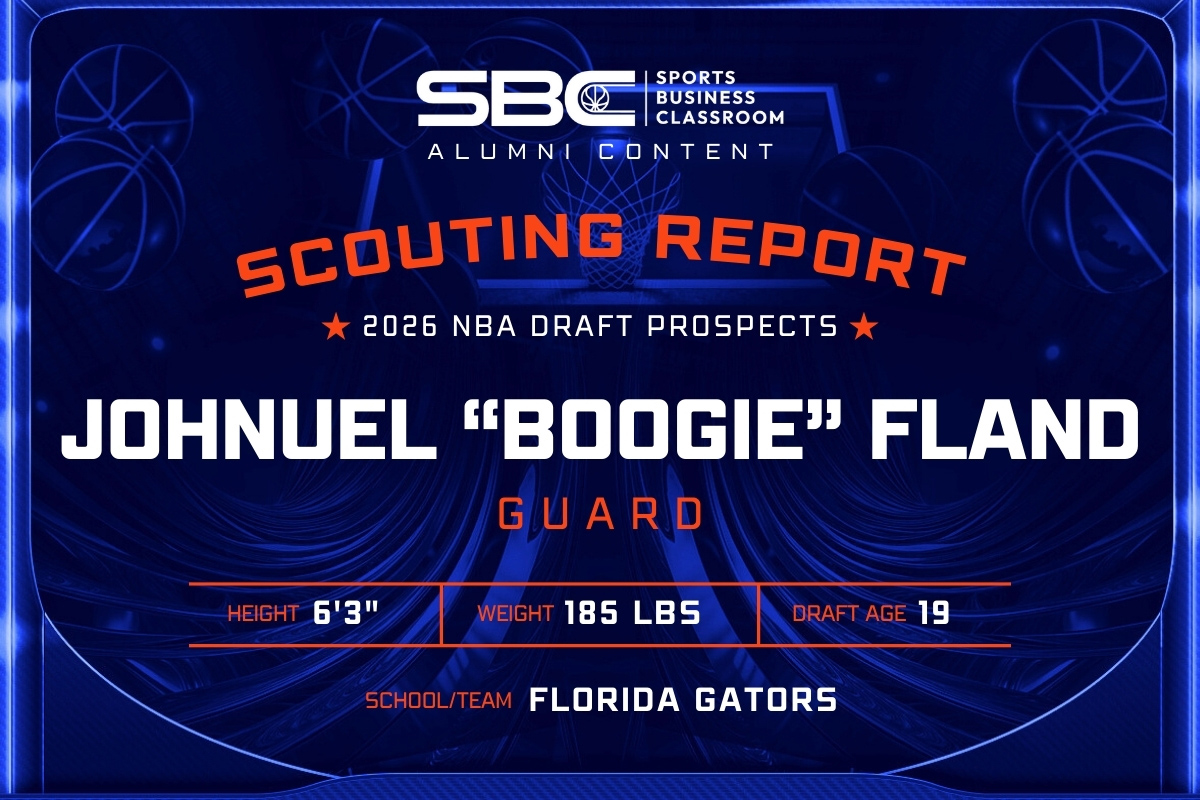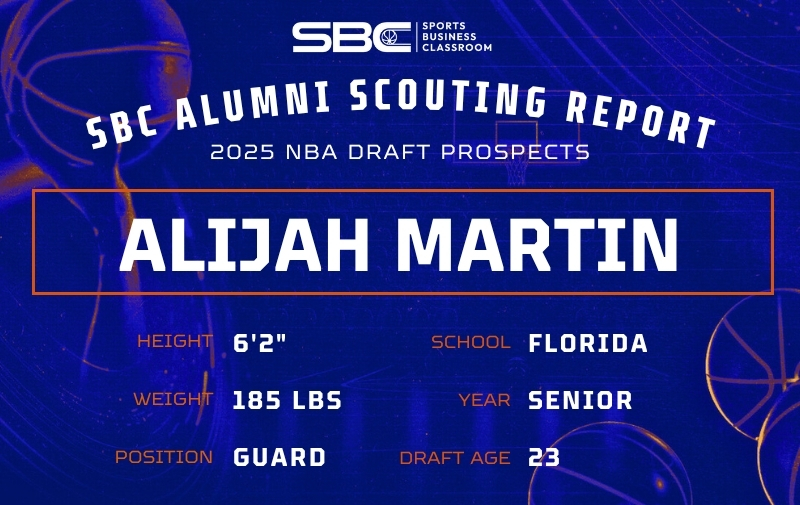
[The following scouting report is part of a series on potential 2023 draft prospects from Sports Business Classroom alumni.]
Jaime Jaquez Jr.
Frame: 6′ 7″, 225 lbs
Position: Guard/Wing
Team: UCLA
2023 draft age: 22
Stats via: ESPN, Barttorvik, Sports-Reference,
Offense
Jaquez Jr. is a versatile wing who can play multiple offensive positions. Second on his team in assists, Jaquez uses his size to see over defenders and find open teammates. His 2.4 assists per game were a career-high, second only to starting point guard Tyger Campbell. Jaquez Jr. also led his team in rebounds; his 20.2 defensive rebounding percentage was seventh among 109 high major Division I wing-forwards. Jaquez’s ability and willingness to rebound allowed UCLA to play their small-ball lineup, causing mismatches for opponents en route to their 31-win season.
Jaquez Jr. was among the most productive players this past season, one of just four Division I players to average at least 17 points, eight rebounds, and 1.5 steals per game. With great size for the guard/wing position, he knows how to get to his spots, as he was one of just nine Division I players this past season to make at least 200 two-point field goals. Of these nine players, only one, Jalen Pickett (Penn State), is shorter at 6’4″.
Despite shooting just 31.3 percent this past season, Jaquez is a threat to score beyond the arc. He has a smooth stroke and is a capable catch-and-shoot player when he squares his feet. Jaquez is patient in the post and possesses a quality fade away. However, of the 28 Division I wing forwards who made over 100 close shots, Jaquez Jr.’s percentage ranks 20th, highlighting his tendency to force the issue.
Jaquez struggles to create contact, often fading away and maneuvering around defenders. His 24.9 free throw rate percentage is 79th of 109 Division I wing forwards. Despite his size, Jaquez tends to play small in the post. He allows defenders to easily alter his shots, although he is an excellent offensive rebounder (20th of the previously mentioned 109 players).
This may cause issues at the next level, where players are quicker and stronger. If he struggles to hit perimeter shots and score in the post at the next level, he may be unable to make the most out of his hybrid size and unique skillset.
Defense
Jaquez’s defensive rating ranked first of 109 Division I wing forwards. He has quick hands and can hold his own against bigger, more athletic forwards. Jaquez can be a disruptive defender, second on the Bruins with 1.5 steals per game. He jumps lanes and defends without fouling, committing just 2.2 fouls per 40 minutes, ranked 62nd of 427 high major Division I players who played at least 50 percent of the minutes during the season.
Jaquez Jr. is not the most physically gifted, but he plays smart, takes calculated risks, and switches on multiple positions. He has active hands, often deflecting passes and using his size to prevent guards from finding an open teammate. His steal percentage of 2.8 ranks 56th of the previously mentioned 427 players, highlighting his ability to make plays and agitate the offense.
He primarily struggled against quicker guards in perimeter isolation. Jaquez lacks the speed and lateral quickness defensively to make plays from behind when beaten. UCLA often played a small-ball lineup, allowing him to focus on the opposing team’s forwards, masking his defensive shortcomings.
Jaquez has solid footwork but must improve his lateral movements to prevent teams from seeking him in a mismatch. He held his own against forwards in the post and generally generated deflections and steals. As a big-bodied versatile wing, Jaquez has the framework to become a capable defender at the next level; he must remain aggressive but smart with his movements and decision-making to combat the athleticism the NBA brings.
Looking Ahead
The best ability is availability, and Jaquez started 126 career games at UCLA and 103 over the past three seasons.
The key for Jaquez offensively will be his perimeter shooting. He hit 39.4 percent from three as a sophomore but fell to 27.6 percent and 31.7 percent this past season. He’s a better shooter than his numbers indicate, but becoming a reliable three-point weapon will be vital in Jaquez’s NBA production.
A good iso player, Jaquez can back down defenders in the post and make the right pass; he should be able to provide ample floor spacing and use his size to create mismatches on the offensive side of the ball. Jaquez will need to prove he isn’t afraid of contact and can compete in the paint with NBA big men. His fadeaway in the post will be one of his go-to moves as a rookie and throughout his career.
As a 22-year-old three-year starter, Jaquez will be one of the most experienced players in the draft. He’s not a superior athlete, so he must utilize his basketball IQ, court awareness, and pesky defense to earn a spot in the rotation. An early bench role will help Jaquez develop his game, adjust to the speed, and provide offense for the second unit.







